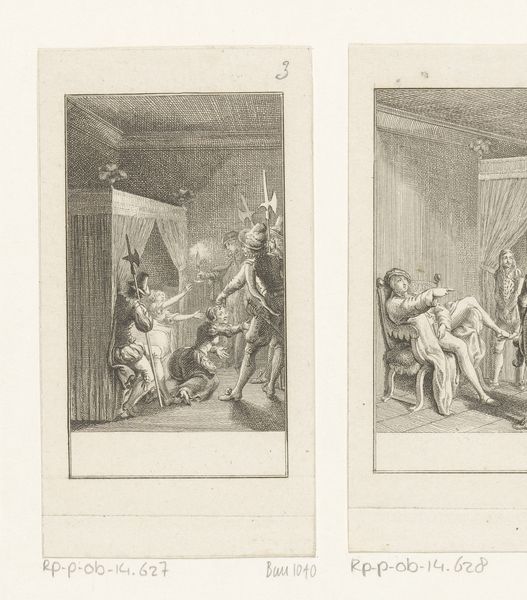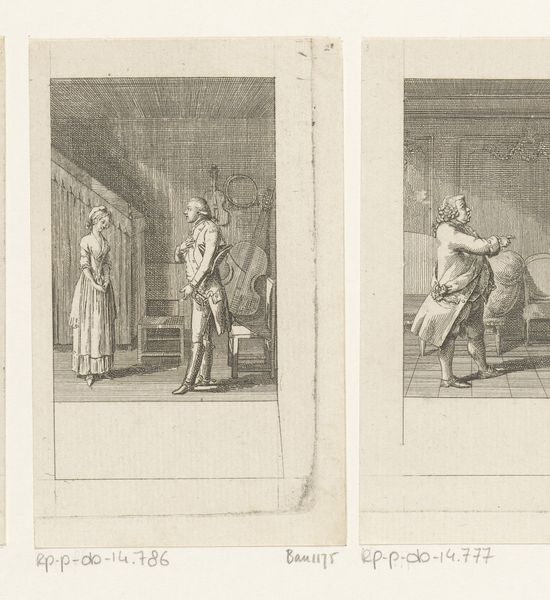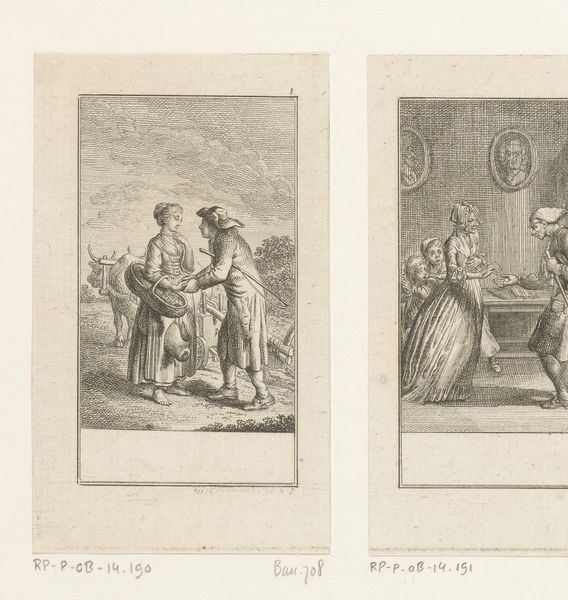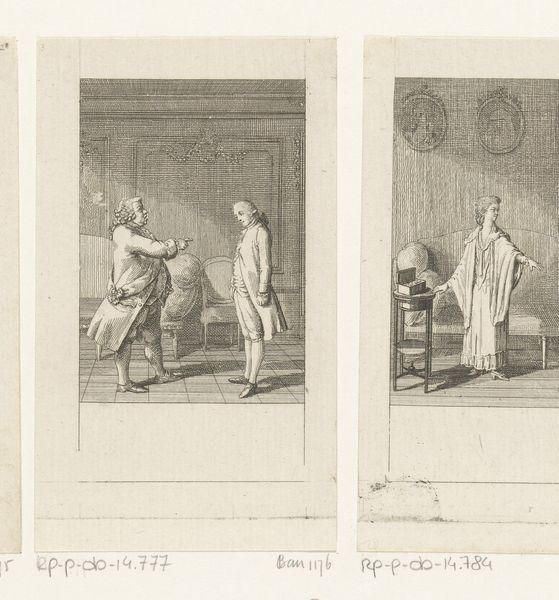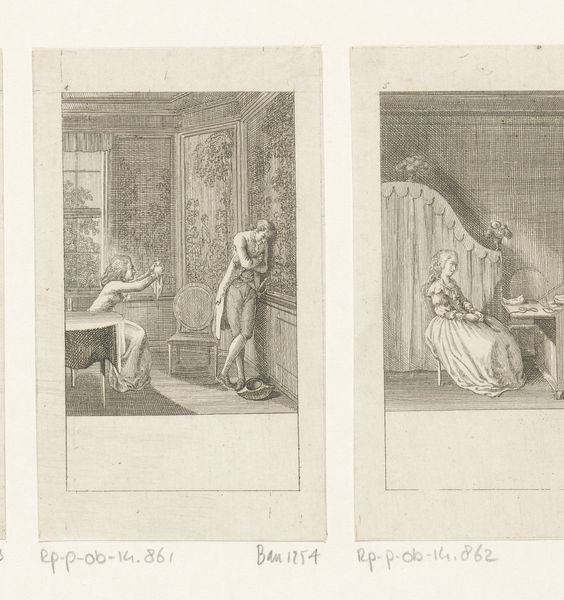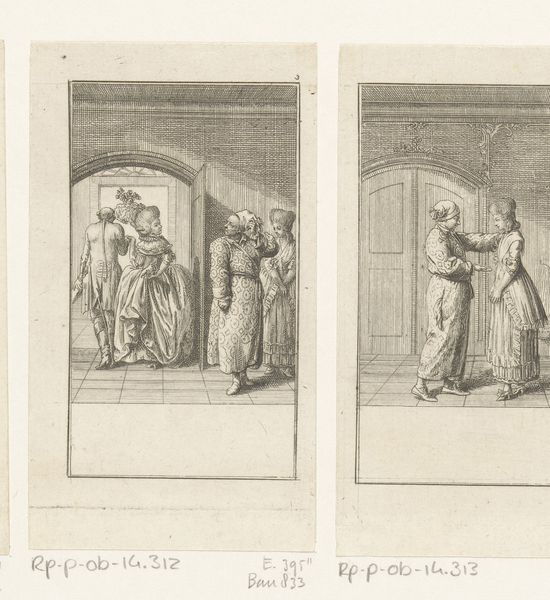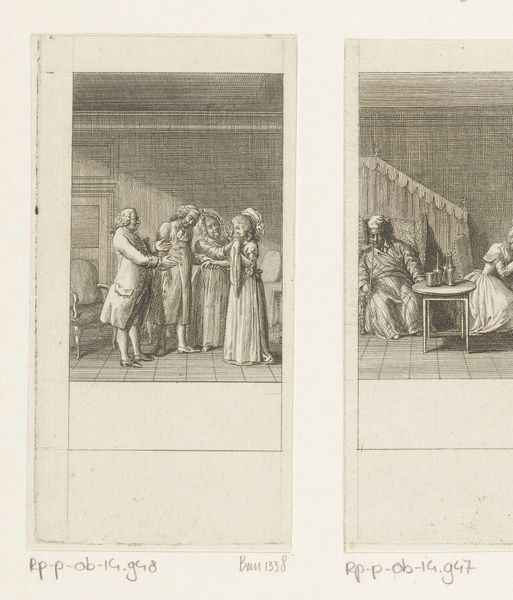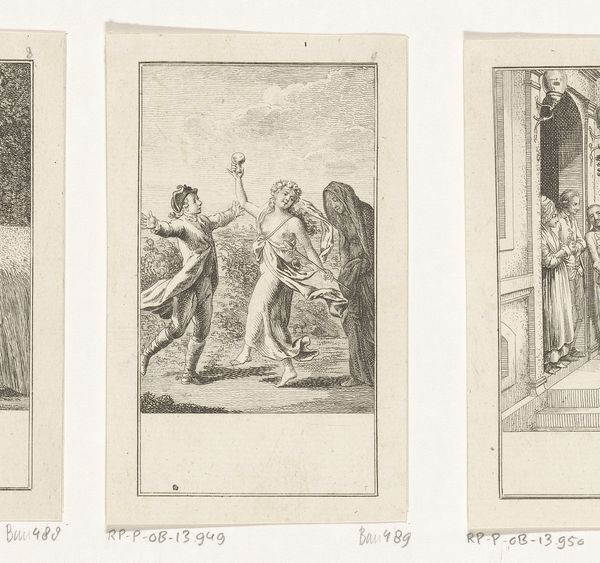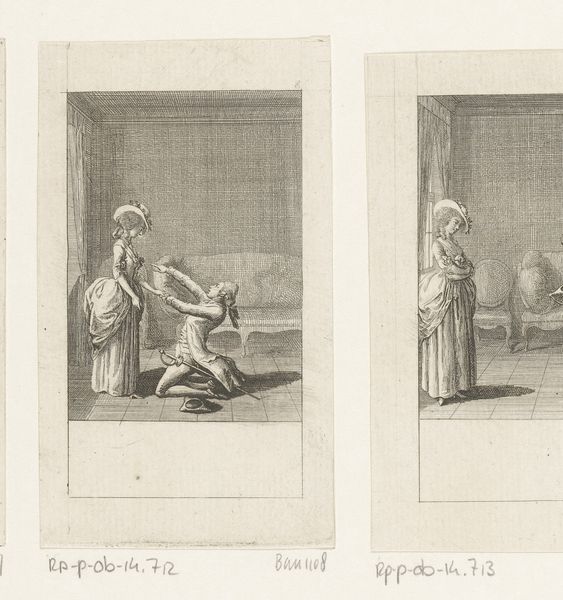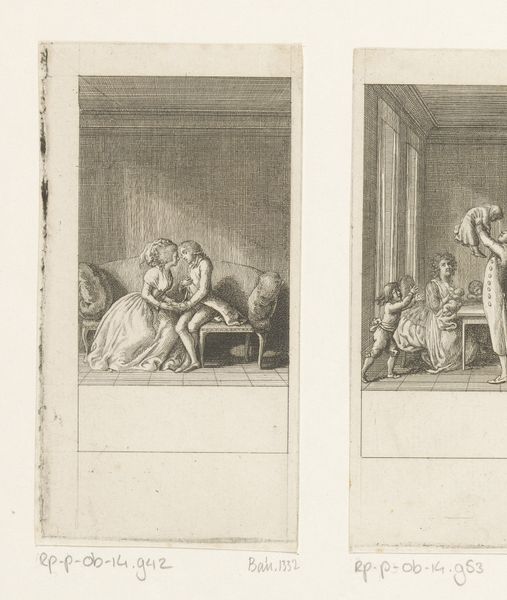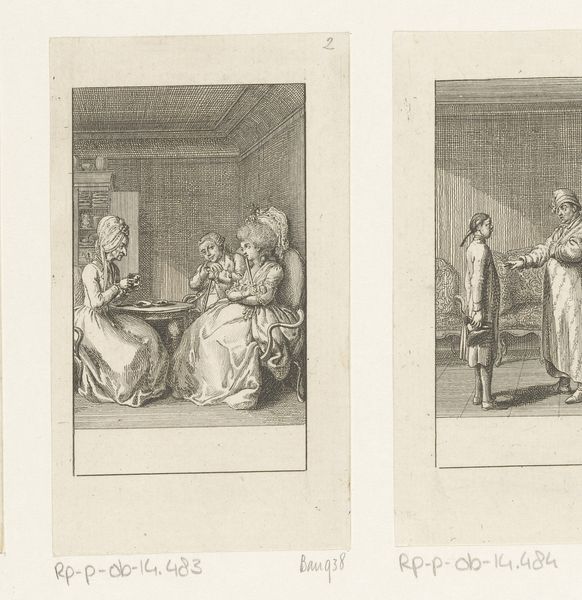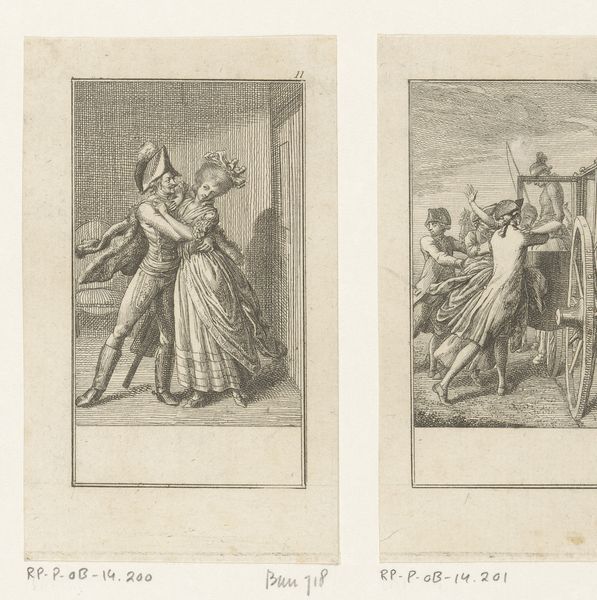
graphic-art, print, engraving
#
portrait
#
graphic-art
#
neoclacissism
# print
#
genre-painting
#
engraving
Dimensions: height 114 mm, width 65 mm
Copyright: Rijks Museum: Open Domain
Curator: The mood here feels incredibly staged and a little claustrophobic, doesn't it? The rigid lines almost seem to imprison the figures within the image. Editor: This engraving by Daniel Nikolaus Chodowiecki, titled "Reinhard in gesprek met zijn kamerheer," or "Reinhard in Conversation with his Chamberlain" dates to 1781. It's currently held in the Rijksmuseum. Let’s explore its historical and social context a bit more. What's striking to me is the power dynamic it suggests. Curator: Ah, power dynamics. Tell me more about the materials involved here and their connection to societal structure. It is an engraving after all. What level of access would ordinary people have had to something like this in the late 18th century? Editor: The figures embody a strict class division through gesture and dress. Reinhard, reclining with an almost bored demeanor, showcases the leisured elite. His Chamberlain, leaning forward in a servile manner, represents the working class even if he has some kind of position in this environment. Their relationship is dictated by their positions within a strict social order. Curator: You've highlighted the economic production angle. But consider the performative aspect of power in this moment too, and the ways masculinity, or the expectations placed upon it, intersect with societal norms in this little engraving. What expectations and rules are shaping their behaviors here? Editor: Precisely! The meticulous detail in the lines speaks to a specific skill and labor that produced images like this. The circulation of printed images democratized art to some extent. This print format meant that it was probably accessible to a wider, more commercially-minded audience beyond the aristocracy, a group interested in viewing different class dynamics. Curator: Definitely, it gives us clues about consumption, about labor, but also about self-image in 1781, and about the types of narrative that might have had currency back then in that particular class. Even the Neoclassical elements apparent, feel staged. It’s a constructed narrative. Editor: It truly reflects the intricate workings of class, labor, and material culture during the late 18th century, offering valuable insights into the society and structures of its day. Curator: It encourages a rich intersectional approach, a blend of theory, social dynamics and the impact of gendered social performance that informs our understanding today.
Comments
No comments
Be the first to comment and join the conversation on the ultimate creative platform.
